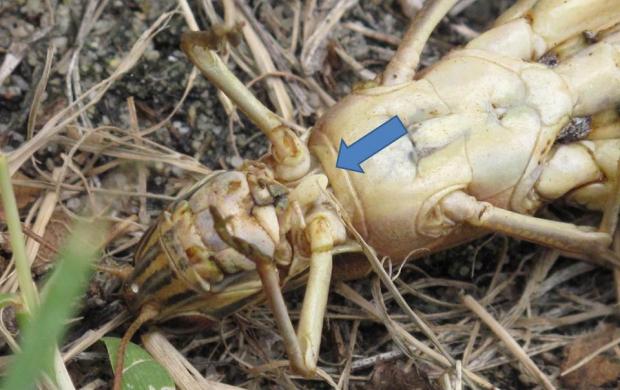
During spring and summer large numbers of locusts can be produced over a large area of the agricultural regions of Western Australia. They also occur throughout the metropolitan landscape.
Spur-throated locusts can be very mobile and will move to homesteads and rural towns. Because of the concentration of irrigated plants in gardens relative to surrounding areas, locusts can be attracted to gardens and cause damage.
The following products are registered for control of grasshoppers and are readily available from your local nursery or hardware store and rural merchandise suppliers.
| APVMA* product number | Category | Product name | Active ingredients |
|---|---|---|---|
| 42261 | Household insecticide | David Grays cricket and grasshopper killer bait | Carbaryl |
| 55736 | Biological control | Green Guard SC Biological Insecticide | Naturally occurring |
*APVMA = Australian Pesticides and Veterinary Medicines Authority
Remember to always read, follow chemical label directions and wear safety gear.
Locust control in home gardens:
- The damage that large numbers of locusts can do to gardens can only be stopped by the use of insecticides.
- If a swarm of locusts arrives, landowners should act quickly.
- Nurseries and hardware retailers can supply the small quantities of insecticides for individual home gardens and advise on their safe use.
- It is important that label directions relating to rates of application of insecticides in gardens are followed.
For further information on locust control in home gardens, contact the Pest and Disease Information Service.
